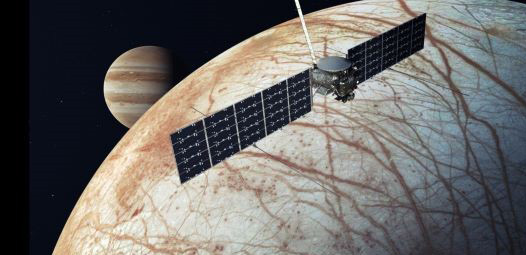
A team of researchers from the Massachusetts Institute of Technology has created a theoretical model that confirms that the salinity of the oceans on Saturn’s moon Enceladus may be at the right level for life.
In a paper published in the journal Science Advances, the team describes the factors used in the model and the conditions on Enceladus they took into account when measuring the salinity of its oceans.
Data collected by the Cassini and Galileo missions show that Enceladus and Europa (Jupiter’s moon) could potentially satisfy three conditions thought to be necessary to support life on other celestial bodies: they have an energy source, they have liquid water, and a mixture of chemicals that previous research says that it is necessary for life.
Geyser-like jets near Enceladus’ south pole may provide insights into the chemistry and dynamics of the ocean believed to lie beneath the moon’s icy mantle.
Previous studies have shown that water on Enceladus may contain organic substances necessary for life. To learn more, the researchers created a theoretical model based on Cassini data and previous work on ice formation on spheroids as a function of ocean currents, ice geometry and salinity.
The model indicates that at the poles, a saltier ocean corresponds to a thicker ice sheet, and a less salty one to a thinner one. Cassini data have already shown that the ice over the poles of Enceladus is thinner than at the equator, so the salinity of the water is low, perhaps 30 grams per liter of water.
For comparison, the salinity of water in terrestrial oceans is about 35 g/l. The model also confirmed the possibility of currents under the ice due to temperature fluctuations and heat sources under the water.

PHOTO: NASA/JPL
A new mission to a distant and cold world
We still have to wait for new data. NASA’s new Europa Clipper mission won’t launch until October 10, 2024. It will travel to Jupiter and conduct detailed studies of the moon Europa, as well as to obtain data on the ocean (twice the size of Earth) from under the same ice sheet.
Scientists will be able to better understand the mysteries of the origin of life on Earth and better recognize the possibility of life in other cosmic worlds.
Sources: Phys.org, NASA – Jet Propulsion Laboratory.
Source: Hot News RO
Robert is an experienced journalist who has been covering the automobile industry for over a decade. He has a deep understanding of the latest technologies and trends in the industry and is known for his thorough and in-depth reporting.